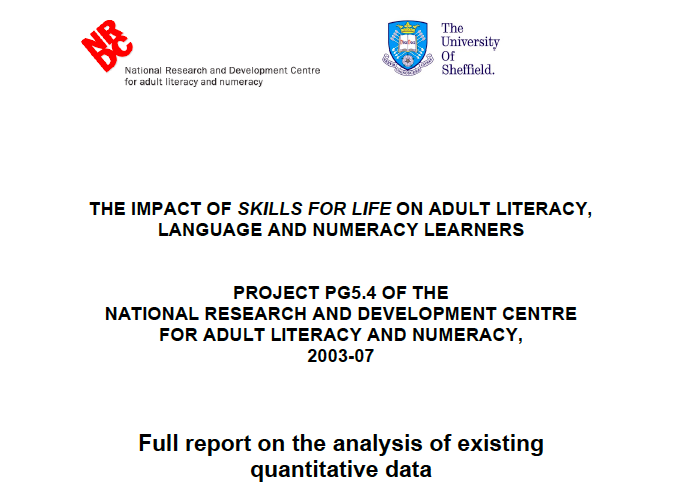The Skills for Life strategy was introduced in 2001 with a key aim of making sure that England had one of the best adult literacy and numeracy rates in the world. When the strategy was introduced, three targets were set. The initial target was to improve the literacy and numeracy skills of 750,000 adults in England by July 2004, the second to increase this figure to 1.5 million by 2007 and the final target to reach 2.25 million by 2010 (DfEE, 2001). The aim of this research project was to provide evidence on the question ‘What impact has the Skills for Life strategy had on learners?’ The project ran from October 2003 until March 2007, and had three strands:
- quantitative analysis of existing national data on adult literacy, language and numeracy (ALLN) learners in the Learning and Skills Council’s databases for 2000/01 to 2004/05
- quantitative analysis of new data on ALLN learners
- qualitative fieldwork involving interviewing stakeholders, including large numbers of ALLN learners, in 2004-06
This report is concerned with the first strand. The aim of all three strands was to provide converging evidence related to the impact of the strategy on learners. There was a parallel and linked study of the impact of Skills for Life on teachers. Drafts of the various reports from both projects informed the government’s ‘refreshing’ of the Skills for Life strategy in 2007.
Excel data files:

